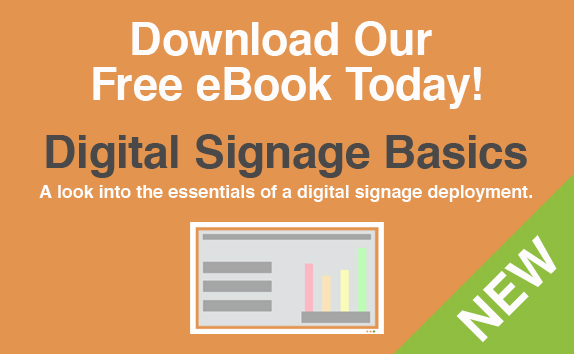Comparison of Commercial and Consumer Screens – Noventri Classroom Video
We are often asked about the difference between consumer and commercial screens. Does this matter when considering digital signage?
The following Noventri Classroom Video examines this question.
Click here to view on mobile devices.
Transcript:
If you are looking into Digital Signage, whether it be for menu boards for a QSR, or Reader Boards for a Hotel or even for Data Metric Displays in Manufacturing, there is one question that is probably going to pop up into your mind. Why is there such a variety of Commercial screens, when I can just go to the department store and take a TV off the shelf there and use that for my digital signage?
That’s certainly a valid question, and one we hear quite often. Let’s look at 4 different things that you should consider when it comes to choosing what type of screen to use for your digital signage.
1. Price – The most obvious point of comparison with commercial and consumer screens is the price tag. Consumer screens start off a little easier on the wallet, whereas commercial screens have a little heftier price tag. Well why is this? It all starts with the internal circuitry. Commercial screens have been designed with heavy-duty components inside. This is because they are going to be in an extended use application. This means the screens could be running from 10, 16, maybe even 24 hours a day, seven days a week because of commercial use.
Consumer screens are designed for a less intensive run time. Used in the same way, you could heat-soak a consumer screens’ internal components and thereby shortening its life expectancy. As you can see, consumer screens offer little in the way of heat protection. The commercial screen has heavy-duty heat sinks as well as fans built in for cooler operating temperatures. It is not uncommon for a consumer screen to need to be replaced every year or 2 when it’s in a commercial environment. Whereas a commercial grade screen can run 4, 5, even 6 years with no issues.
2. Warranty – Most department stores offer you the ability to get extended warranties on your electronic products. This is something you certainly want to look into if you are going to be using consumer screens for your digital signage. You want to make sure that you look at the warranty that they have listed. Many manufacturers of consumer screens have language written in there that if you are going to use those screens for commercial use, they will severely limit or could even void the warranty.
Commercial screens usually come with a 2 or 3 year warranty right out of the box and it is easy to get those extended to up to even 5 years. Because these screens are made to be serviceable, you can even get on-site warranties where if on the rare occasion something happens to your screen, a technician would be out within 24 hours to fix your screen or replace it. And you can have your signage back up and running in no time.
3. Features – Consumer screens do offer some features. You can even get access to your NetFlix account or be able to stream YouTube videos from your TV. But with commercial screens, that is where you get the real enterprise level features. For example RS232 commands. Through these your digital signage actually can control when your TV comes on and off. And it can control the brightness, contrasting and other menu settings.
There are special fans and venting built into Commercial grade screens that enables you to mount them in a vertical or portrait position, gives you a little more options for how you would like to design your digital signage. And you don’t have to worry about them burning up or becoming heat soaked when they are handled that way. They also display brighter. This is because they are designed to be in a well-lit environment, where Consumer screens are okay with the lighting you might find in your living room or family room.
4. Availability – Consumer screens are readily available. If you need to add or replace a screen you can easily go to the department store and get another one off the shelf. You want to be careful though because it can be difficult to find an exact match for what you already have installed in your facility. This is because their production life is shorter and even within a few months, to go to that store and find an exact match for what you already have could be very difficult.
Commercial screens have a longer production life. This means obviously that it would be easier to find an exact replacement for the particular models that you are already using. That way your digital signage system will all look like a cohesive unit.
Also because of that production cycle, digital signage companies are able to test their players and software against those screens to make sure there is no compatibility issues. This can be very important because with consumer screens, there is no guarantee that what you get out of the box is going to work with your preexisting signage system.
The last link between your audience and your message is your screen. You can have the greatest content in the world but it does no good if the audience cannot see it because your screens are down. Commercial screens have been designed to handle the rigorous use that they will be put through with digital signage. So you want to take careful consideration to make sure you are choosing the best screen for your application as it will be displaying your content successfully for years to come.
Using digital signage with commercial grade screens can go a long way to improving communications within manufacturing facilities. To see 10 advantages for using digital signage for communications in manufacturing, please download our eBook.





